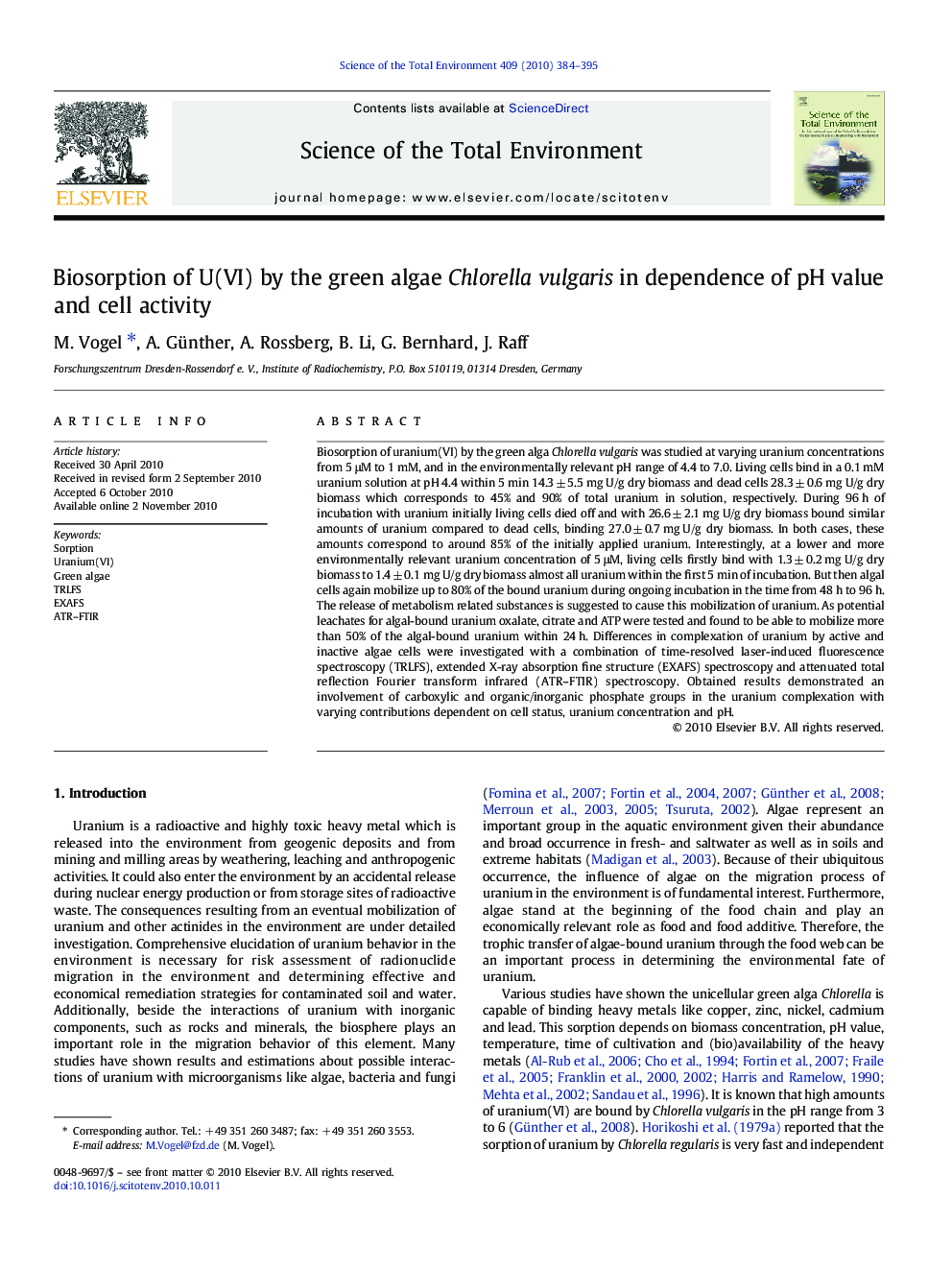| کد مقاله | کد نشریه | سال انتشار | مقاله انگلیسی | نسخه تمام متن |
|---|---|---|---|---|
| 4430363 | 1619860 | 2010 | 12 صفحه PDF | دانلود رایگان |

Biosorption of uranium(VI) by the green alga Chlorella vulgaris was studied at varying uranium concentrations from 5 μM to 1 mM, and in the environmentally relevant pH range of 4.4 to 7.0. Living cells bind in a 0.1 mM uranium solution at pH 4.4 within 5 min 14.3 ± 5.5 mg U/g dry biomass and dead cells 28.3 ± 0.6 mg U/g dry biomass which corresponds to 45% and 90% of total uranium in solution, respectively. During 96 h of incubation with uranium initially living cells died off and with 26.6 ± 2.1 mg U/g dry biomass bound similar amounts of uranium compared to dead cells, binding 27.0 ± 0.7 mg U/g dry biomass. In both cases, these amounts correspond to around 85% of the initially applied uranium. Interestingly, at a lower and more environmentally relevant uranium concentration of 5 μM, living cells firstly bind with 1.3 ± 0.2 mg U/g dry biomass to 1.4 ± 0.1 mg U/g dry biomass almost all uranium within the first 5 min of incubation. But then algal cells again mobilize up to 80% of the bound uranium during ongoing incubation in the time from 48 h to 96 h. The release of metabolism related substances is suggested to cause this mobilization of uranium. As potential leachates for algal-bound uranium oxalate, citrate and ATP were tested and found to be able to mobilize more than 50% of the algal-bound uranium within 24 h. Differences in complexation of uranium by active and inactive algae cells were investigated with a combination of time-resolved laser-induced fluorescence spectroscopy (TRLFS), extended X-ray absorption fine structure (EXAFS) spectroscopy and attenuated total reflection Fourier transform infrared (ATR–FTIR) spectroscopy. Obtained results demonstrated an involvement of carboxylic and organic/inorganic phosphate groups in the uranium complexation with varying contributions dependent on cell status, uranium concentration and pH.
Journal: Science of The Total Environment - Volume 409, Issue 2, 15 December 2010, Pages 384–395